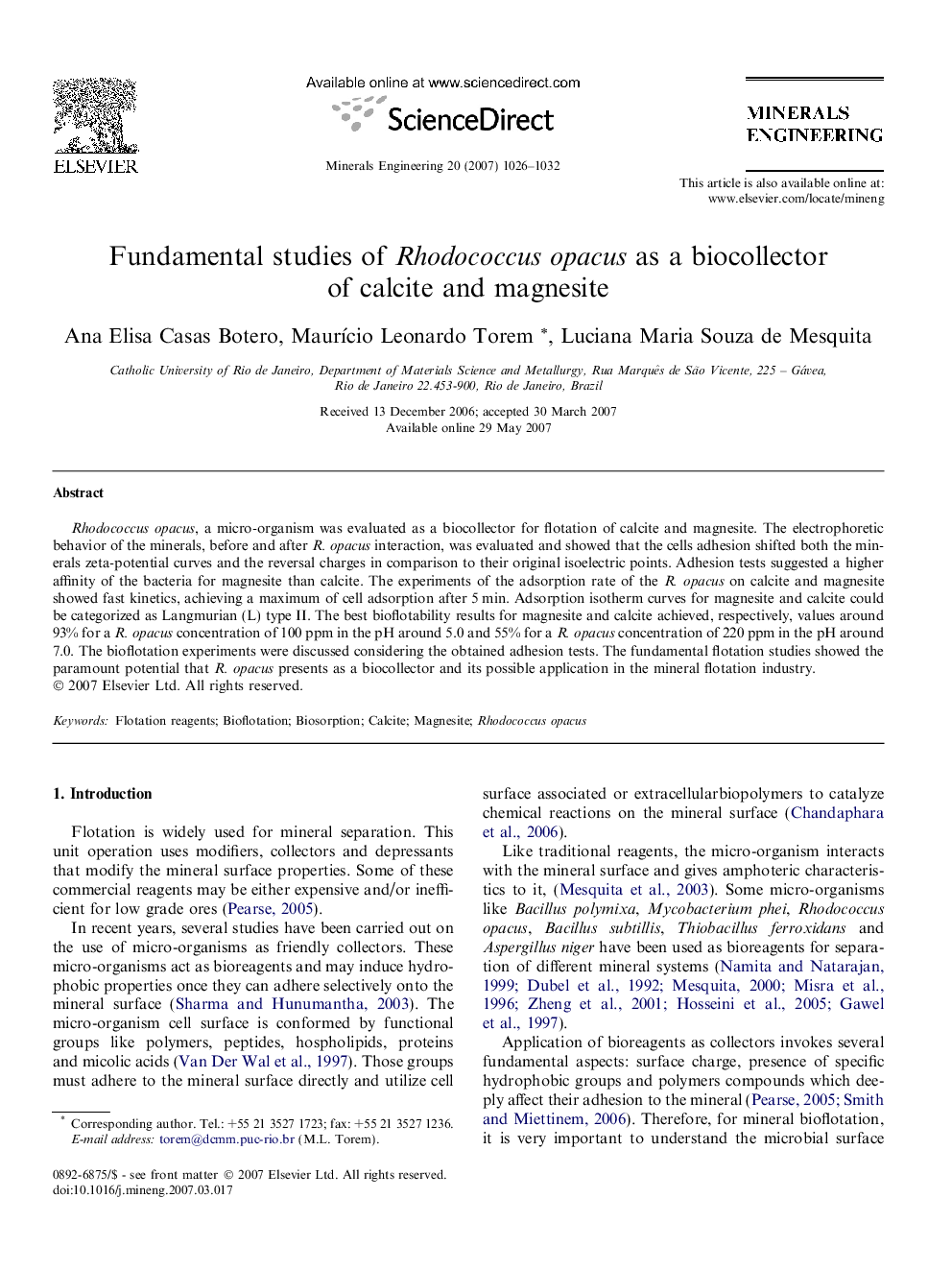| Article ID | Journal | Published Year | Pages | File Type |
|---|---|---|---|---|
| 234294 | Minerals Engineering | 2007 | 7 Pages |
Rhodococcus opacus, a micro-organism was evaluated as a biocollector for flotation of calcite and magnesite. The electrophoretic behavior of the minerals, before and after R. opacus interaction, was evaluated and showed that the cells adhesion shifted both the minerals zeta-potential curves and the reversal charges in comparison to their original isoelectric points. Adhesion tests suggested a higher affinity of the bacteria for magnesite than calcite. The experiments of the adsorption rate of the R. opacus on calcite and magnesite showed fast kinetics, achieving a maximum of cell adsorption after 5 min. Adsorption isotherm curves for magnesite and calcite could be categorized as Langmurian (L) type II. The best bioflotability results for magnesite and calcite achieved, respectively, values around 93% for a R. opacus concentration of 100 ppm in the pH around 5.0 and 55% for a R. opacus concentration of 220 ppm in the pH around 7.0. The bioflotation experiments were discussed considering the obtained adhesion tests. The fundamental flotation studies showed the paramount potential that R. opacus presents as a biocollector and its possible application in the mineral flotation industry.
